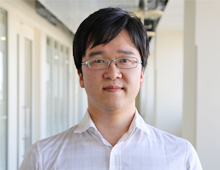Emergent Molecular Assembly Research Unit
Principal Investigator
- PI Name
- Hiroshi Sato
- Degree
- Ph.D.
- Title
- Unit Leader
- Brief Resume
2008 Ph. D., The University of Tokyo 2008 Researcher, JST-ERATO Kitagawas Integrated Pores Project 2010 Project Assistant Professor, Institute for Integrated Cell-Material Sciences, Kyoto University 2012 Assistant Professor, Institute for Integrated Cell-Material Sciences, Kyoto University 2014 Lecturer, Department of Chemistry and Biotechnology, University of Tokyo 2020 Associate Professor, Department of Chemistry and Biotechnology, University of Tokyo 2020 Researcher, PRESTO, Japan Science and Technology Agency 2021 Unit Leader, Emergent Molecular Assembly Research Unit, Cross-Divisional Materials Research Program, RIKEN Center for Emergent Matter Science (-present) 2023 Specially Appointed Professor, International Institute for Sustainability with Knotted Chiral Meta Matter (-present)

Outline
The aim of this unit is to unleash the potential of molecules by controlling their assembly and arrangement patterns, and to create novel functions that are impossible to achieve with single molecules. Our specific research themes are as follows.
(1) Creation of materials by precise arrangement of topological bonds: By periodically arranging topological bonds such as catenanes, we will realize new materials.
(2) Sequence control in supramolecular polymerization: In supramolecular polymerization, it is still challenging to control the monomer sequence, so we are trying to control the sequence in coordination polymers.
Research Fields
Chemistry, Materials Science
Keywords
Self-assembly
Crystal engineering
Porous materials
Surface/Interface
Results
Topological bonds assemble to form porous crystals
Our unit succeeded for the first time in synthesizing crystals by precisely arranging catenane molecules (topological bonds), which are chains of two ring-shaped molecules, and metal ions three dimensionally through coordination bonds. The crystal structure was examined using single crystal X-ray structural analysis, and it was found that more than 90% of the crystal is composed of catenane molecules, that it has a structure with micropores, and that it changes its structure with changes in temperature. Furthermore, it was revealed that the crystal changes its shape when force is applied from the outside and recovers its original shape when the force is removed, showing rubber-like properties despite its crystalline nature. This is expected to lead to the application of innovative porous materials that can absorb and desorb gas molecules, such as carbon dioxide, by pinching and releasing them with a finger.
Photoresponsive Porous Crystals
Metal–organic frameworks (MOFs) are porous materials constructed from metal ions and organic ligands, and their various types of pores can be applied to gas storage, separation, catalysis, etc. In general, MOFs that readily take in guest molecules do not readily release them, and there is often a trade-off between taking in and releasing guest molecules. We are challenging this long-standing dilemma for porous materials by developing MOFs composed of diarylethene derivatives, photoreactive molecules. The MOFs can be disassembled into solution by UV light irradiation and reconstructed by visible light irradiation, which enables the highly effective release and uptake of various guest molecules.
Members
Hiroshi Sato |
Unit Leader | hiroshi.sato[at]riken.jp | |
|---|---|---|---|
Naeimeh Bahrilaleh |
Visiting Scientist | ||
Wei Yuan |
Student Trainee |
Publications
- K. Leng, H. Sato, Z. Chen, W. Yuan, and T. Aida
J. Am. Chem. Soc. 145, 23416–23421 (2023)Photochemical Surgery” of 1D Metal-Organic Frameworks with a Site-Selective Solubilization/Crystallization Strategy
- W. Meng, S. Kondo, T. Ito, K. Komatsu, J. Pirillo, Y. Hijikata, Y. Ikuhara, T. Aida, and H. Sato
Nature 598, 298 (2021)An elastic metal-organic crystal with a densely catenated backbone
- H. B. Huang, H. Sato, J. Pirillo, Y. Hijikata, Y. S. Zhao, S. Z. D. Cheng, and T. Aida
J. Am. Chem. Soc. 143, 15319-15325 (2021)Accumulated Lattice Strain as an Internal Trigger for Spontaneous Pathway Selection
- H. Sato, T. Matsui, Z. Chen, J. Pirillo, Y. Hijikata, and T. Aida
J. Am. Chem. Soc. 142, 14069 (2020)Photochemically Crushable and Regenerative Metal-Organic Framework
- J. M. Lee, and H. Sato
Nat. Chem. 12, 584–585 (2020)Photoswitching to the core
Contact Us
Room 411, Main Research Building, Hirosawa 2-1, Wako, Saitama 351-0198 Japan
E-mail:
hiroshi.sato[at]riken.jp
News
-
Oct 14, 2021
Press ReleasesCrafting a “sponge” for adsorbing and desorbing gas molecules


